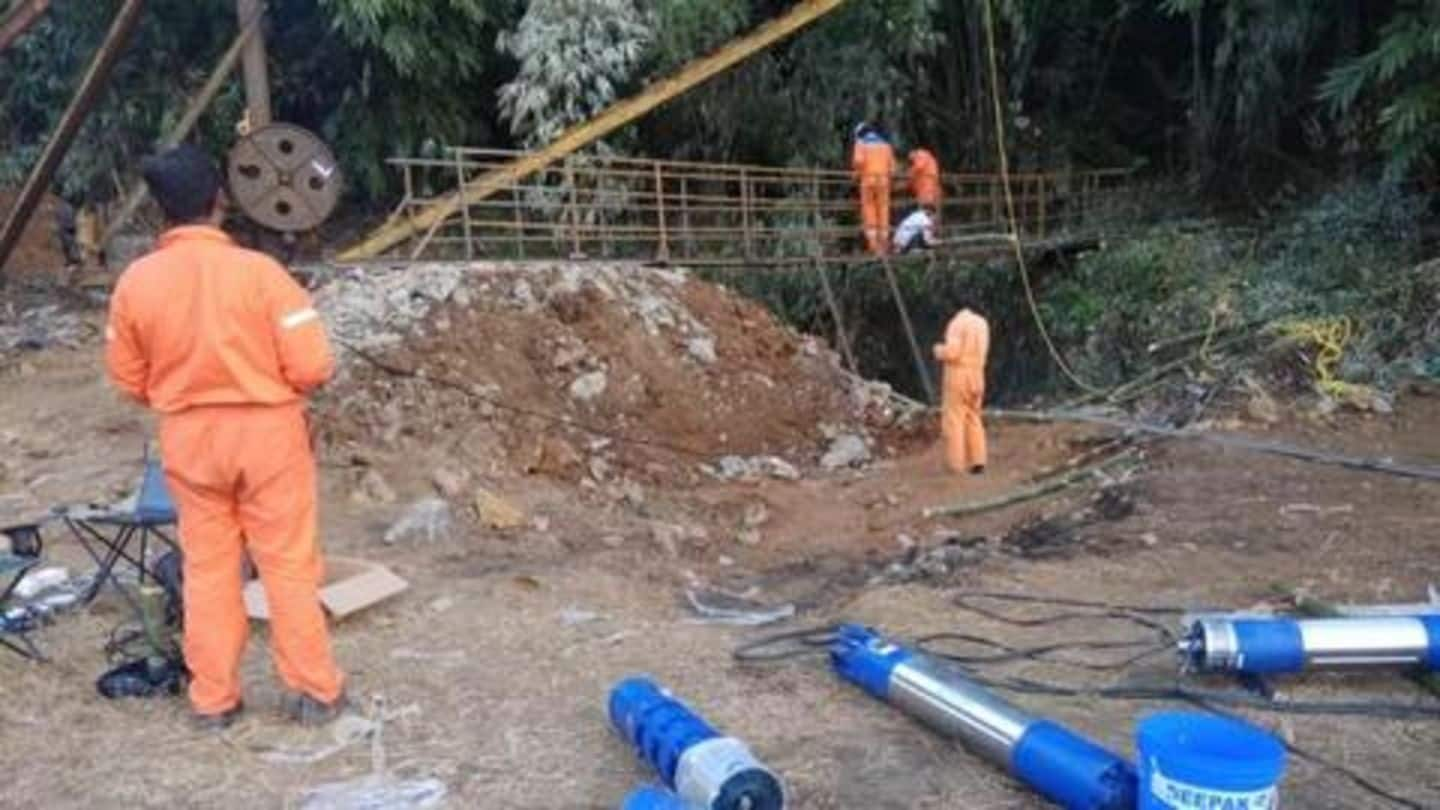
Meghalaya: Rescue forces spot one miner's body after 33 days
What's the story
More than a month after 15 miners got trapped inside an illegal rat hole coal mine in Meghalaya, one of them has been found dead. The body has now been brought to the mouth of the mine from where it will be fished out in the presence of doctors. Meanwhile, there's no word on the other miners yet. Here are the details.
Details
Water levels remain unchanged, thereby making further searches difficult
The body, discovered at a depth of 160ft underwater, was spotted by one of the Indian Navy's remotely operated vehicles (ROVs). While the search to find the other miners is still on, water levels inside the 370ft deep remain unchanged, despite efforts by rescue forces to pump out water using heavy-duty pumps. The remaining miners, too, are feared dead.
Backstory
The miners got trapped on December 13
The mine in question is located in Meghalaya's East Jaintia Hills district, near the Lytein river in Ksan village. Reportedly, the miners started work on the illegal mine on December 11, and got trapped on December 13 when water from the Lytein river gushed in and flooded the mine. It's believed that the miners accidentally breached an old, flooded mine, leading to the disaster.
Efforts
Multiple agencies were roped in after weeks of ineffective efforts
Subsequently, after two weeks of ineffective efforts to pump out water from the flooded mine, the Indian Air Force, on December 28, transported heavy-duty pumps from Coal India to help with the operation. A team of 20 personnel from the Odisha Fire Services also joined in on the operation, and subsequently, a team of 18 divers from the Indian Navy were flown in from Visakhapatnam.
More delays
Efforts were further marred by the mine's water level
Yet, efforts by Indian Navy divers to locate the miners also proved to be ineffective, as the water level in the mine remained too high, and underwater visibility was extremely poor. Despite multiple efforts by the divers to locate the miners, they remained unsuccessful for a long time. Given the pace of rescue efforts, an incensed Supreme Court had demanded that the miners be taken out, "dead or alive".
Blame?
Government apathy is to blame for the miners' fate
It should be noted here that the miners might have had a chance if the Meghalaya state government had not been apathetic in its initial response. From the very first day, rescue operations were marred by poor coordination between agencies, lack of requisite equipment, and days of delay owing to bureaucracy. If the remaining miners survive, it'd be nothing short of a miracle.
Earlier
History repeats itself
As unfortunate as it is, this isn't the first incident of this nature. In 2012, at least 15 people got trapped inside a similar 'rat hole' mine in the South Garo Hills, and their bodies were never found. Subsequently, in 2014, the National Green Tribunal (NGT) banned such mines owing to their unscientific nature, and risks involved. Evidently, the ban wasn't strictly enforced.